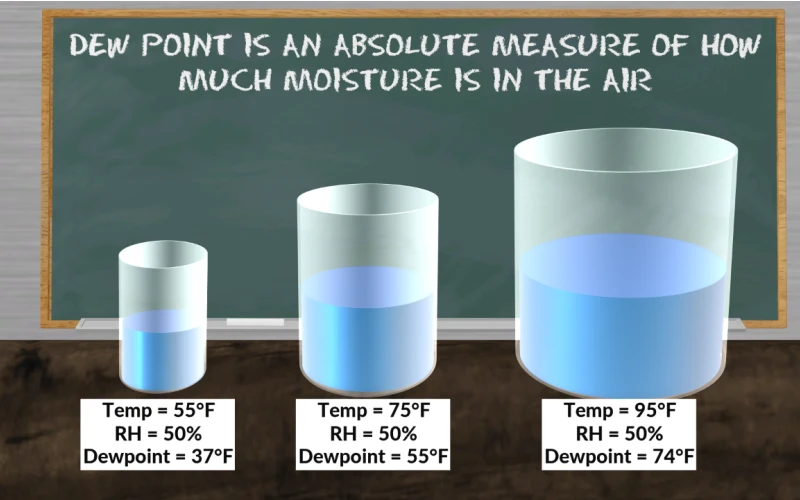
# High Dew Point Conditions and Their Impact on Weather Patterns
## Understanding High Dew Point
The dew point is the temperature at which air becomes saturated with water vapor, leading to condensation. A high dew point indicates a significant amount of moisture in the air, often resulting in humid and uncomfortable conditions. When the dew point rises above 65°F (18°C), most people begin to notice the humidity, and levels above 70°F (21°C) can feel oppressive.
## How High Dew Point Affects Weather
High dew point conditions play a crucial role in shaping weather patterns. The increased moisture content in the atmosphere can lead to several meteorological phenomena:
– Increased likelihood of precipitation
– Formation of dense fog
– Enhanced thunderstorm development
– Reduced visibility
– Higher heat index values
## The Relationship Between Dew Point and Temperature
While relative humidity is often discussed in weather forecasts, dew point provides a more accurate measure of atmospheric moisture. Two days with the same relative humidity can feel drastically different if their dew points vary significantly. For instance, a 90°F (32°C) day with a 70°F (21°C) dew point will feel much more uncomfortable than a 70°F day with the same dew point.
## Regional Variations in High Dew Point Conditions
Certain regions experience high dew points more frequently than others:
– Coastal areas near warm ocean currents
– Tropical climates
– Regions near large bodies of water
– Agricultural areas with extensive irrigation
– Urban heat islands
## Health and Comfort Implications
Extended periods of high dew point conditions can affect both human health and infrastructure:
– Increased risk of heat-related illnesses
– Difficulty in cooling buildings efficiently
– Potential for mold growth
– Reduced athletic performance
– Higher energy consumption for air conditioning
## Forecasting High Dew Point Events
Meteorologists use various tools to predict high dew point conditions:
– Atmospheric soundings
– Satellite moisture imagery
– Computer model outputs
– Surface observations
– Historical climate data
Understanding these predictions helps communities prepare for potentially dangerous heat and humidity combinations.
## Climate Change and Dew Point Trends
Recent studies suggest that climate change may be contributing to more frequent high dew point events in certain regions. Warmer global temperatures allow the atmosphere to hold more moisture, potentially leading to more extreme humidity events and altering traditional weather patterns.
Keyword: high dew point
